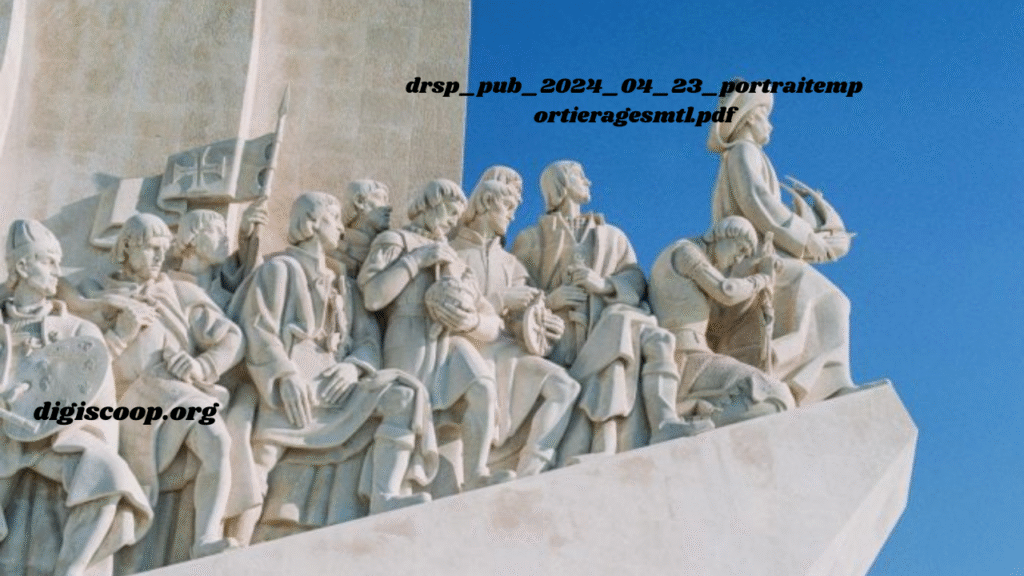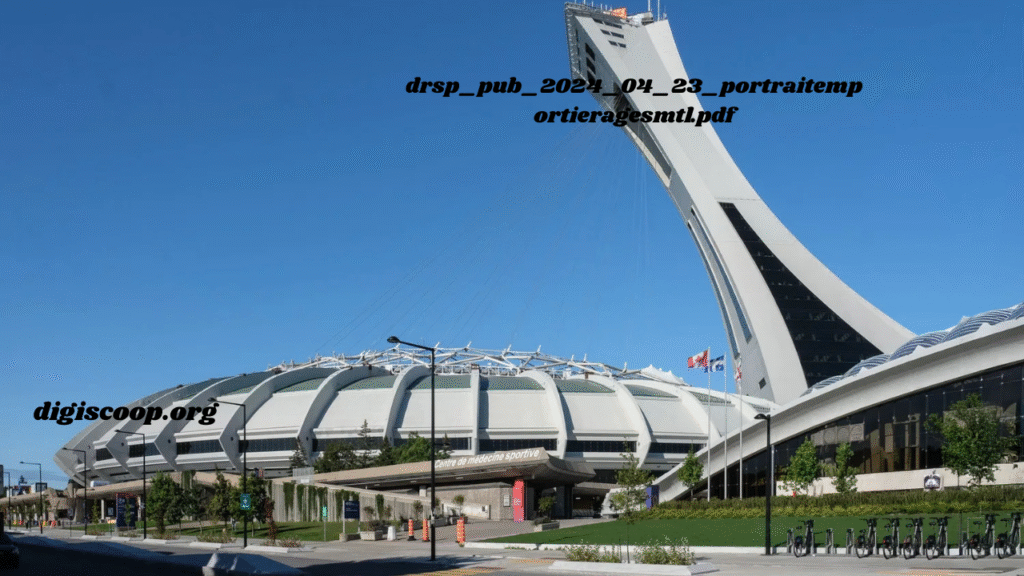Introduction
The document titled drsp_pub_2024_04_23_portraitemportieragesmtl.pdf appears to be a comprehensive portrait of portierages (doorkeeping, caretaker, or related community functions) in Montreal. While the technical filename looks complex, it represents a focused study dated April 23, 2024, that sheds light on a subject of urban and social importance. This portrait likely combines data, lived experiences, and analysis about how portierages function across Montreal’s neighborhoods. The addition of “??” in the context signals some areas of ambiguity, possibly reflecting missing data or open questions in the study.
This article explores the themes that a report like drsp_pub_2024_04_23_portraitemportieragesmtl.pdf might cover, from historical context to social roles, challenges, and future directions. The goal is to interpret and expand the meaning of the document title while weaving in broader insights that align with Montreal’s evolving urban landscape.
Historical Background of Portierages

Portierages, in their most traditional sense, refer to caretakers or gatekeepers who serve as intermediaries between residents and buildings, or between institutions and communities. In Montreal, the concept has roots in both European urban practices and local adaptations. Historically, portiers or janitors were indispensable figures in multi-unit dwellings, ensuring maintenance, order, and basic security.
The shift from single-family homes to shared housing structures in Montreal made the role of portierages more pronounced. They were more than workers; they became familiar presences in daily life. Over time, the scope of their responsibilities expanded, blending practical duties with informal social care.
The Contemporary Role in Montreal

The drsp_pub_2024_04_23_portraitemportieragesmtl.pdf document likely emphasizes the present-day complexity of portierages in Montreal. Today, portierages are not limited to sweeping hallways or repairing minor issues. They also act as social connectors, bridging gaps between diverse populations within residential, educational, and institutional settings.
For example, in large apartment complexes or community centers, portiers often provide guidance to newcomers, assist with translation, or direct residents toward essential services. In multicultural cities like Montreal, where linguistic and cultural differences are common, this role takes on heightened importance. Portierages are informal social workers, easing the transition of residents and preventing isolation.
Portierages as Social Anchors

The report most likely underscores the idea that portierages function as social anchors within neighborhoods. They are often the first point of contact for tenants in distress and can identify early signs of problems, whether they involve housing insecurity, health challenges, or social conflicts.
The presence of portierages adds a layer of reassurance. Families, seniors, and immigrants can rely on a known face who understands their environment and is available daily. In Montreal, where community resilience is central to urban planning, these figures quietly reinforce the city’s social fabric.
Challenges and Limitations
A significant section of drsp_pub_2024_04_23_portraitemportieragesmtl.pdf would likely address the challenges portierages face. Despite their vital role, they often work under precarious conditions. Compensation may not reflect the broad scope of their responsibilities, and recognition is inconsistent across different institutions.
Another pressing challenge is the risk of burnout. Since portierages serve as informal problem-solvers, they frequently carry emotional burdens without professional support. For immigrant portiers, language barriers and cultural misunderstandings may further complicate their work. Finally, the rapid pace of urban development in Montreal raises concerns about whether these traditional roles are being adequately adapted for modern housing and community needs.
Policy and Institutional Recognition
The inclusion of a publication date in the filename suggests this document is an official study by a public health or social planning body. If so, one of its key contributions is likely policy-oriented. The portrait may call for greater recognition of portierages within institutional frameworks, highlighting their potential to reduce pressure on public services.
For policymakers, the challenge is how to integrate portierages into broader community strategies. Training programs, mental health support, and fair compensation could all strengthen the sustainability of the role. Recognizing portierages as partners in community well-being would represent an important step forward.
The Human Side of Portierages
Beyond statistics and policy, the document likely emphasizes stories from the field. Personal testimonies reveal the human dimension of portierages in Montreal. For instance, a caretaker might describe helping an elderly tenant navigate healthcare services or mediating a conflict between neighbors. These everyday acts, though small, accumulate into meaningful impacts on quality of life.
Such narratives remind readers that portierages are not abstract functions but real people embedded in their communities. Their relational work often transcends job descriptions and demonstrates the irreplaceable value of human presence.
Future Directions
Looking ahead, drsp_pub_2024_04_23_portraitemportieragesmtl.pdf might explore the evolving nature of portierages in response to technological and social change. Digital platforms for building management are reducing some practical tasks, but the need for human connection remains. Hybrid models, where portiers balance digital tools with interpersonal care, may become the norm.
Furthermore, Montreal’s demographic shifts will shape portierages’ future. As the population ages and immigration continues to diversify communities, the demand for empathetic, multilingual, and culturally aware caretakers will grow. This portrait may serve as both an analysis and a call to prepare for these transitions.
Conclusion
The document drsp_pub_2024_04_23_portraitemportieragesmtl.pdf offers more than data; it provides a portrait of a profession that is simultaneously humble and essential. By analyzing the role of portierages in Montreal, the study shines light on the ways everyday figures contribute to social cohesion. The inclusion of “??” in the context is fitting, since it reflects both the unanswered questions about the future and the mystery of how such understated roles hold together the fabric of a city.
Recognizing, supporting, and reimagining portierages is not just about maintaining buildings. It is about maintaining communities. In this sense, the portrait is also a mirror of Montreal itself: diverse, resilient, and deeply human.
Also Read : Thiên Quan Tứ Phúc cauluongaudio.com, ?? – A Detailed Exploration







